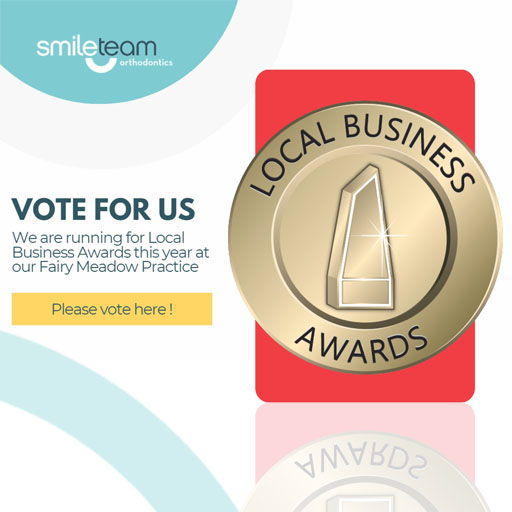
When it comes to improving your smile and oral health, there’s never been a better time to explore orthodontic treatment. Thanks to advances in modern techniques and materials, today’s braces are more comfortable, less noticeable, and highly effective across a range of orthodontic issues — from mild crowding to complex bite problems.
At Smile Team Orthodontics, our highly experienced team has helped thousands of patients of all ages achieve beautifully aligned smiles. In this guide, we’ll walk you through the different types of braces available, helping you understand the options and choose the one that best suits your needs and lifestyle.
What Are the Main Types of Braces?
Modern orthodontics offers several types of braces, each with distinct benefits. The best option for you will depend on factors such as your age, bite complexity, oral health, aesthetic preferences, and treatment goals. Below, we explore each option in detail.
Traditional Metal Braces
Traditional metal braces remain the most popular and effective treatment for correcting a wide range of orthodontic issues. They consist of stainless steel brackets affixed to the front of the teeth, connected by a thin archwire and secured with small elastic bands.
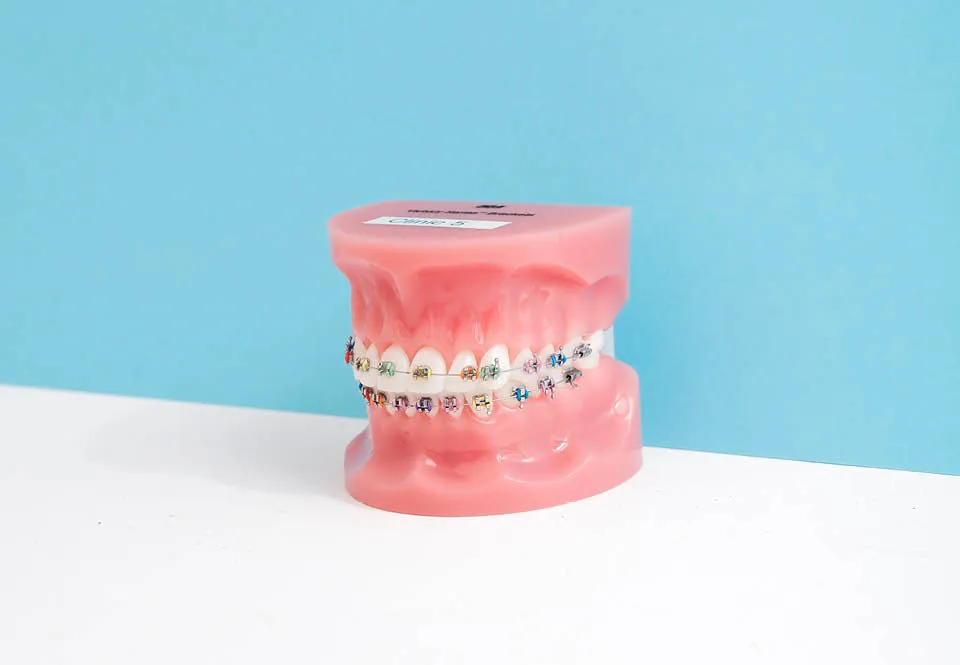
Today’s metal braces are more comfortable and discreet than in years past. Advances in materials, such as nickel-titanium wires and smaller brackets, enable more efficient tooth movement with reduced friction and discomfort.
Pros:
✓ Effective for even the most complex bite issues
✓ Highly durable
✓ Suitable for patients of all ages
Cons:
✗ More visible than other options
Best suited for:
Patients seeking maximum treatment effectiveness, especially for complex orthodontic cases.
Ceramic Braces
Ceramic braces work similarly to traditional metal braces, but with tooth-coloured or clear ceramic brackets that blend in with your natural teeth. This makes them a more discreet option for patients concerned about aesthetics.
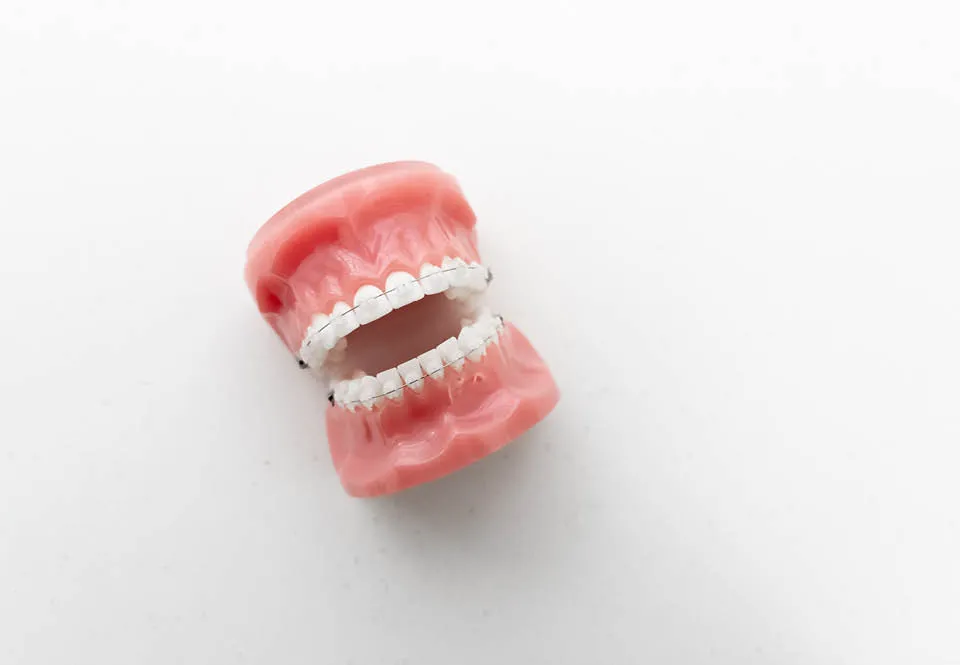
While ceramic braces are highly effective, the brackets are slightly more fragile than metal, and the elastic ligatures can stain if not properly maintained.
Pros:
✓ Less visible than metal braces
✓ Effective for many orthodontic cases
Cons:
✗ More fragile than metal braces
✗ Ligatures may discolour with certain foods
Best suited for:
Adults and older teens seeking a more subtle fixed-brace option.
Self-Ligating Braces
Self-ligating braces feature brackets with built-in clips that hold the archwire in place, eliminating the need for elastic bands. This design reduces friction, allowing for more efficient tooth movement in some cases.
While treatment duration varies between individuals, self-ligating braces can potentially reduce the frequency of adjustment appointments.
Pros:
✓ Easier to clean than traditional braces
✓ May shorten treatment time in some cases
✓ Potentially fewer adjustment visits
Cons:
✗ Still visible, although often with a smaller bracket profile
Best suited for:
Patients wanting efficient treatment with fewer orthodontic visits.
Lingual Braces
Lingual braces are fixed to the lingual (tongue side) of the teeth, making them virtually invisible from the front. They use the same bracket-and-wire technology as conventional braces but require custom fabrication and more advanced placement.
Due to their discreet appearance, lingual braces are popular with professionals who wish to straighten their teeth without visible appliances. However, they may initially affect speech and can be harder to clean.
Pros:
✓ Completely hidden from view
✓ Effective for a wide range of orthodontic problems
Cons:
✗ Higher cost
✗ Speech may be temporarily affected
✗ Oral hygiene can be more challenging
Best suited for:
Adults and older teens prioritising an invisible option.
Clear Aligners (Invisalign®)

Clear aligners, such as Invisalign, offer a completely different approach to straightening teeth. They consist of a series of custom-made, removable trays that gradually shift teeth into their desired position.
Made from smooth, clear plastic, aligners are virtually invisible and can be removed for eating, drinking, brushing, and flossing, offering unparalleled flexibility.
However, clear aligners are most effective for mild to moderate orthodontic cases and require strong patient compliance (typically 22 hours of wear per day) for best results.
Pros:
✓ Nearly invisible
✓ Removable for meals and cleaning
✓ Comfortable and smooth
Cons:
✗ Not suitable for complex bite correction
✗ Requires consistent wear
✗ May not work for all patients
Best suited for:
Adults and teens with mild to moderate alignment issues and prefer a virtually invisible option.
Braces vs Clear Aligners for Complex Orthodontic Cases
Are braces more suitable for complicated cases?
This is one of the most common questions we receive at Smile Team. While clear aligners like Invisalign® are excellent for mild to moderate cases, fixed braces — including metal, ceramic, and lingual options — remain the gold standard for complex bite corrections, such as:
• Severe crowding
• Skeletal bite discrepancies
• Rotated teeth
• Deep bites and open bites
In these situations, fixed braces allow for precise control of tooth movement in three dimensions. Our experienced orthodontists will evaluate your case in detail and provide expert guidance on which treatment will deliver the best outcome.
Watch our video where our specialists explain the differences in treating complex orthodontic cases with braces versus clear aligners.
What Type of Braces Are Recommended for Children, Teens, and Adults?
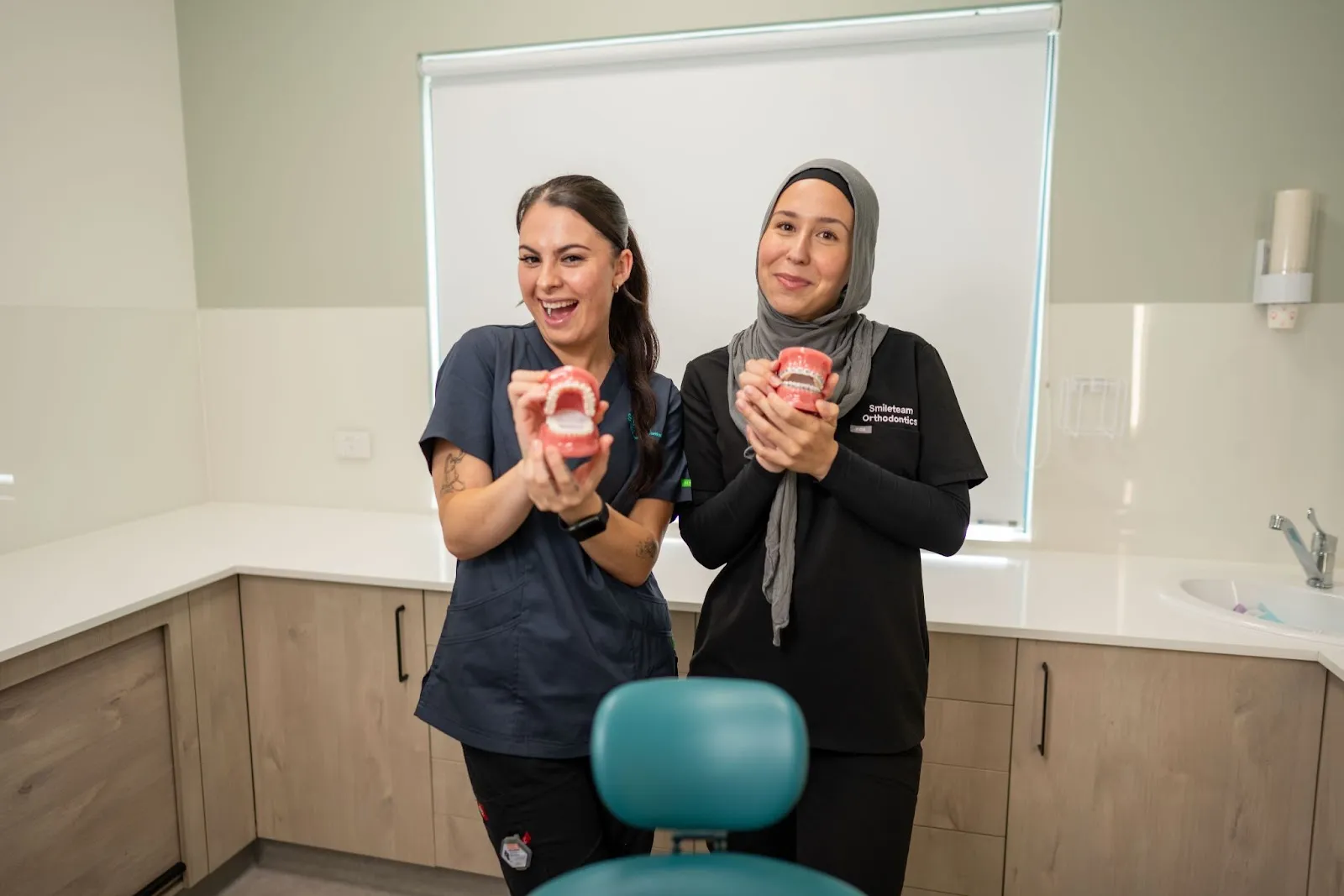
Braces for Children
The Australian Society of Orthodontists recommends that children undergo their first orthodontic evaluation between the ages of 7 and 9, as early identification of potential issues can reduce the need for more extensive treatment later on.
In many cases, early (Phase 1) treatment with braces or other appliances can help guide jaw development and ensure adequate space for adult teeth. While clear aligners can be used in some older children, fixed braces tend to be preferred due to their non-removable nature, ensuring compliance.
Learn more about early orthodontic treatment for children.
Braces for Teens
For teens, the decision between braces and aligners often balances aesthetics, lifestyle, and the complexity of the case. Teens often appreciate the discreet appearance of ceramic braces or clear aligners — but it’s important to consider compliance. Fixed braces ensure consistent progress, whereas removable aligners depend on the wearer’s commitment.
Discussing these options with both your orthodontist and your teen is the best way to select a treatment that works for them both practically and emotionally.
Discover more about braces options for teens.
Braces for Adults
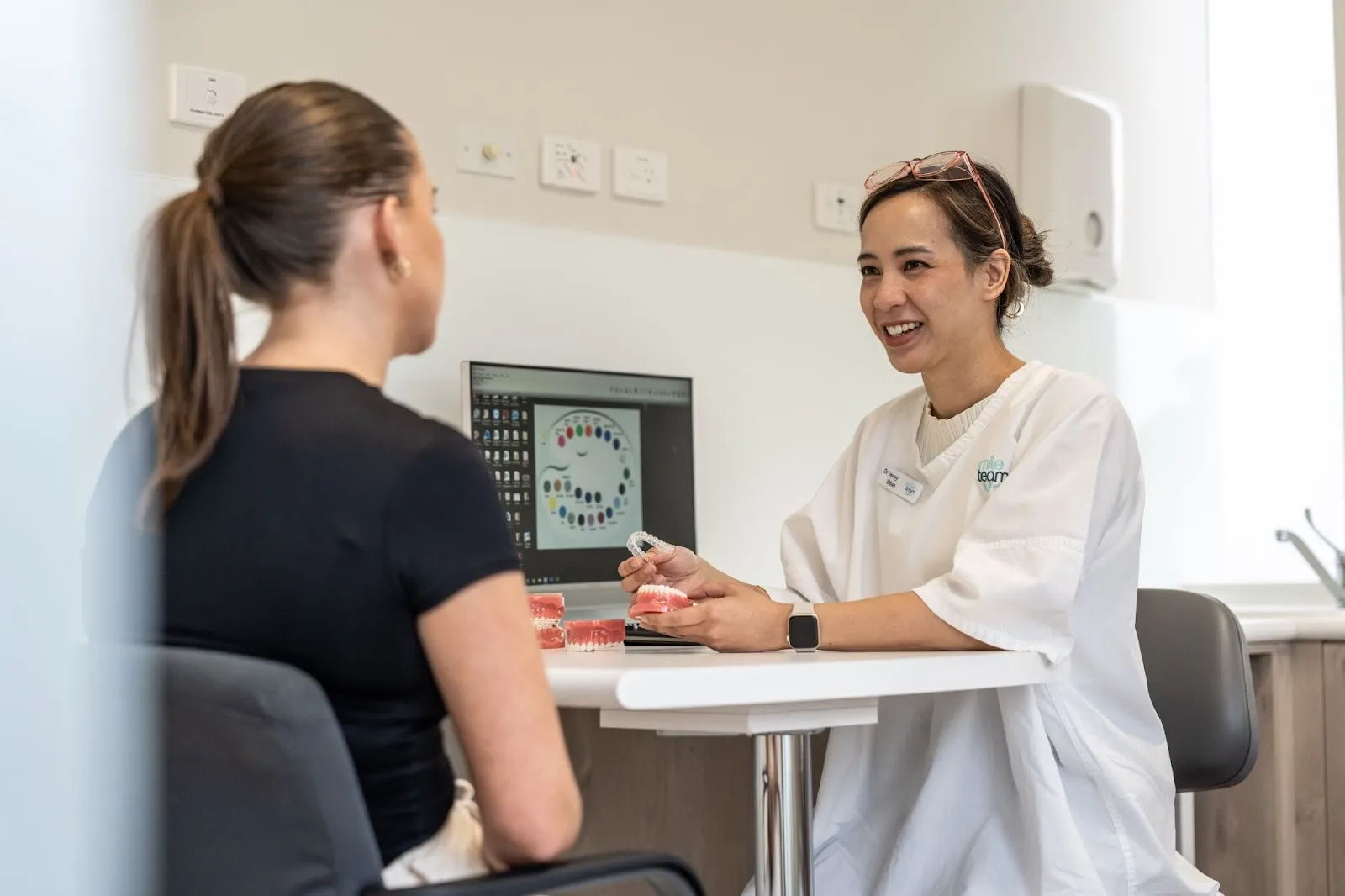
Today, more adults than ever are choosing orthodontic treatment. Whether to correct long-standing bite issues, address jaw pain, or simply improve the appearance of their smile, adults have more choices than previous generations.
Clear aligners, such as Invisalign, are popular due to their flexibility, which allows you to maintain your lifestyle with minimal interruption. Ceramic and lingual braces are also excellent options for those seeking effective yet discreet solutions.
For more complex cases, fixed braces may be necessary to achieve the desired outcome.
Explore adult orthodontic options that suit your lifestyle.
Caring for Your Teeth with Braces
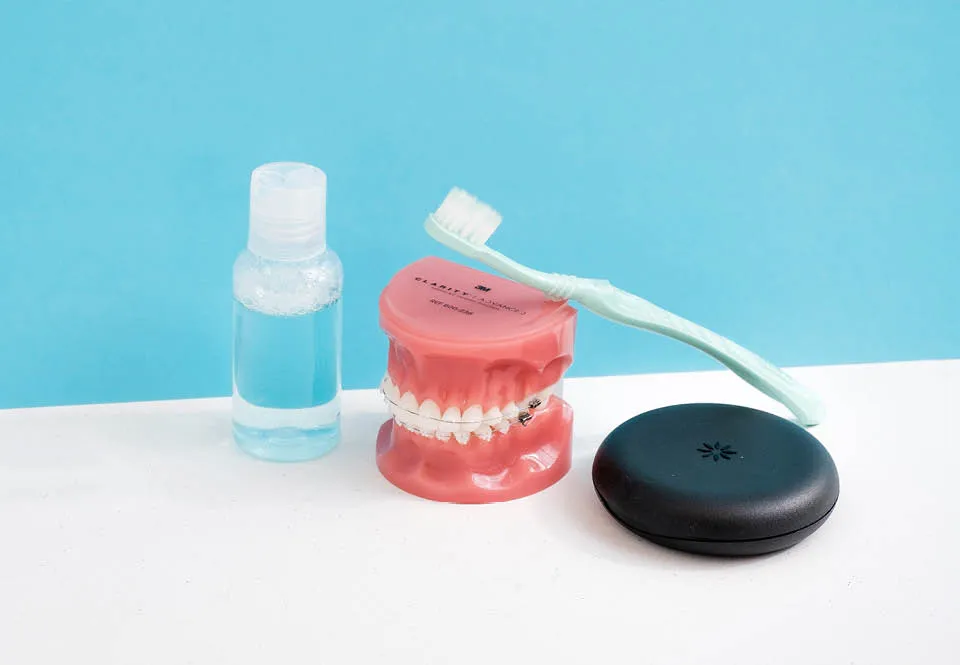
Maintaining excellent oral hygiene is essential during orthodontic treatment, regardless of the type of braces you choose. Each option comes with its own care requirements:
Fixed Braces (Metal, Ceramic, Self-Ligating, Lingual):
• Brush after every meal using a soft-bristled brush
• Use interdental brushes to clean around brackets and wires
• Floss daily with floss threaders or an orthodontic flosser
• Visit your dentist for a professional cleaning every 6 months
• Avoid sugary or sticky foods that can lead to plaque build-up
Clear Aligners (Invisalign®):
• Remove aligners before eating or drinking anything except water
• Brush and floss before reinserting aligners
• Clean aligners daily with clear aligner cleaning crystals or mild soap
• Keep aligners stored in their case when not in use
Proper care not only protects your teeth and gums but also helps ensure successful treatment outcomes.
Lifestyle Considerations with Different Types of Braces
When choosing braces, it’s important to think about how they may affect your daily life. Here are some common considerations:
Sport and Physical Activity:
• Contact sports (football, rugby, martial arts): Wear a protective mouthguard over fixed braces.
• Clear aligners can be removed for sport, but must be worn consistently afterwards.
Speech:
• Lingual braces may temporarily affect your speech until you adjust.
• Clear aligners and traditional braces usually have minimal impact after an initial period of adaptation.
Dietary Restrictions:
• With fixed braces, avoid hard, sticky, or chewy foods that could damage brackets or wires.
• Clear aligners allow you to eat normally when removed.
Public Speaking and Social Situations:
• Ceramic, lingual, and clear aligners provide more discreet options for professionals and teens concerned about appearance.
• Self-ligating and metal braces may be more visible, but are highly effective.
Travel:
• For extended travel, plan ahead: bring orthodontic wax, extra elastics, cleaning supplies, and a travel toothbrush.
Choosing the Right Braces: Key Factors to Consider
When selecting the right type of braces, your orthodontist will evaluate several factors, including:
- Complexity of your case: More complex corrections may require fixed braces.
• Age and growth stage: Certain braces may be more suitable for children, teens, or adults.
• Lifestyle and aesthetic preferences: Visibility, comfort, and removability may influence your decision.
• Ability to comply with treatment: Fixed braces are ideal when compliance may be a challenge.
• Budget considerations: Costs vary depending on the type of treatment — your orthodontist will provide a personalised quote during your consultation.
• Long-term oral health: Your orthodontist will also consider your periodontal health, dental structure, and jaw alignment.
Choosing the right braces is a collaborative process. An experienced orthodontist will take the time to explain your options and guide you toward the most suitable solution for your smile.
Frequently Asked Questions (FAQ)
Q: What is the best type of braces for adults?
It depends on your goals, the complexity of your case, and your aesthetic preferences. Many adults opt for clear aligners or ceramic braces due to their discreet appearance.
Q: Are clear aligners as effective as traditional braces?
Clear aligners are highly effective for mild to moderate cases but may not be suitable for complex bite corrections. Fixed braces remain the gold standard for more challenging cases.
Q: How long does orthodontic treatment usually take?
Treatment times vary. On average, braces are worn for 12–24 months, depending on the complexity of your case.
Q: What is the cost range for braces in Australia?
Costs can vary based on treatment type and duration. Your orthodontist will provide a personalised quote at your consultation.
Q: At what age should children first see an orthodontist?
The Australian Society of Orthodontists recommends an initial check-up between the ages of 7 and 9.
Q: How do I care for my teeth with braces?
Brush after every meal, floss daily, and attend regular dental hygiene appointments. Special tools such as interdental brushes and floss threaders may be helpful.
Q: Will braces affect my speech?
Most people adjust quickly. Lingual braces may affect speech temporarily, while clear aligners and traditional braces generally have minimal impact.
Book a Consultation with Smile Team Orthodontics
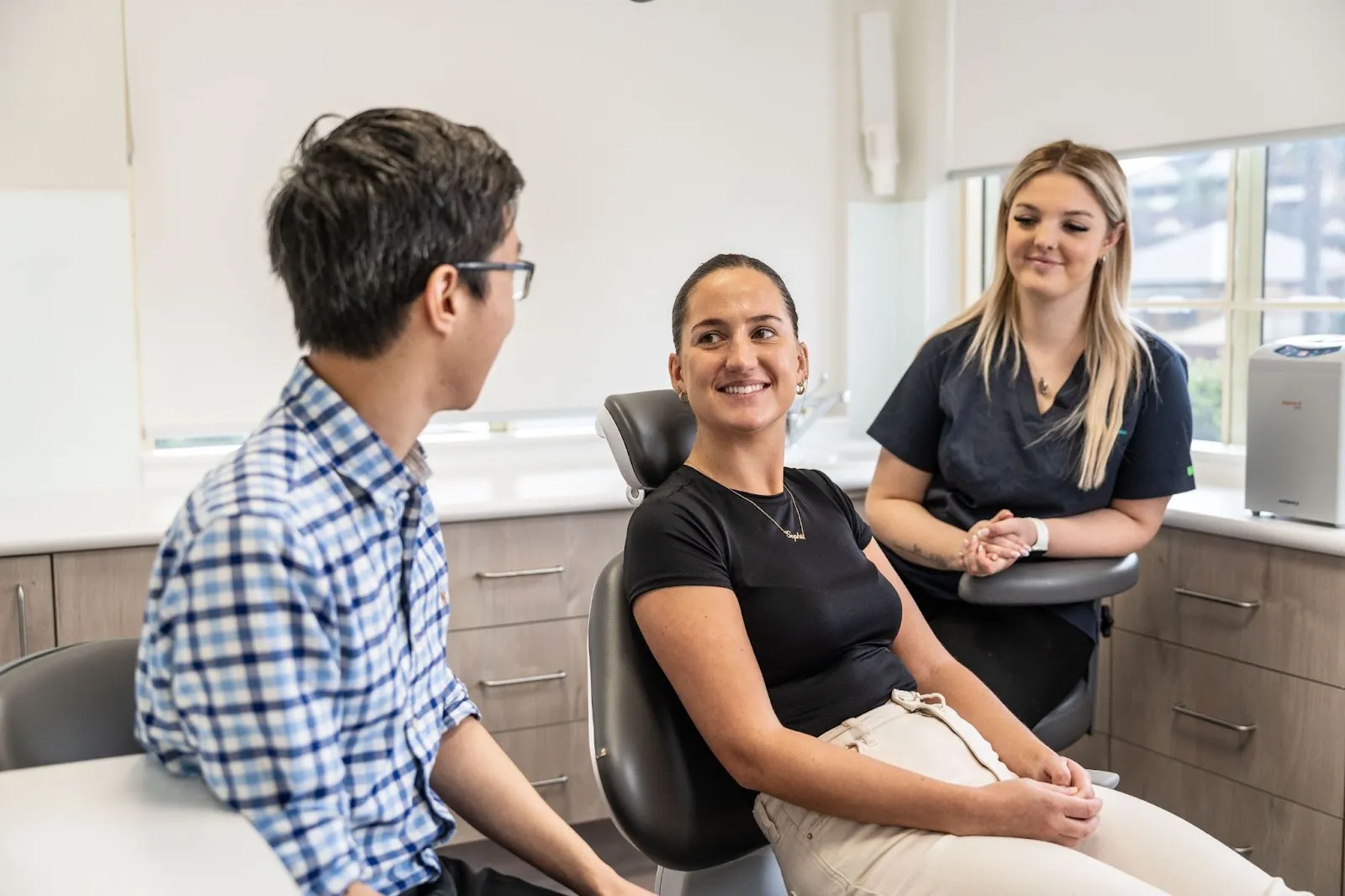
Choosing the right orthodontic treatment is an important decision. It’s not only about achieving a straighter smile — it’s about improving your long-term oral health and confidence.
At Smile Team Orthodontics, our highly qualified orthodontists take the time to understand your needs and design a personalised treatment plan. Whether you’re considering traditional braces, clear aligners, or another option, we’ll help you make an informed choice that fits your lifestyle.
Ready to take the first step towards a healthier smile? Book an assessment with Smile Team Orthodontics today.
